|| Who is a Full Stack Developer?
A Full Stack Developer is a versatile professional in the field of software development who possesses proficiency in both front-end and back-end technologies. They are skilled in building complete web applications, capable of handling tasks ranging from designing user interfaces and implementing client-side functionalities (using languages like HTML, CSS, JavaScript and frameworks like React, Angular, or Vue.js) to managing server-side logic, databases, and server configurations (using languages such as JavaScript/Node.js, Python/Django, Ruby on Rails, Java/Spring, or PHP/Laravel). Full Stack Developers are adept at integrating various components of a web application, ensuring functionality, security, and scalability across the entire development stack. Their ability to work on both ends of the spectrum—user-facing interfaces and server-side implementations—makes them valuable assets in modern software development teams.
|| Full Stack Developer Job Description [With Examples]
The role of a Full Stack Developer is quite versatile and involves working on both the front-end and back-end parts of web development. Here's a detailed description along with some examples of what a Full Stack Developer typically does:
- Front-end Development:
- UI/UX Design: Collaborate with designers to translate mockups and wireframes into responsive, interactive web interfaces.
- Client-side Programming: Write clean, semantic HTML/CSS and JavaScript to implement visual elements and behavior of web applications.
- Frameworks and Libraries: Utilize front-end frameworks like React, Angular, or Vue.js to build robust user interfaces.
- Back-end Development:
- Server-side Programming: Develop server-side logic using languages such as Node.js, Python (Django/Flask), Ruby (Ruby on Rails), or Java (Spring Boot).
- Database Management: Design and implement databases (SQL or NoSQL) and write optimized queries to ensure efficient data storage and retrieval.
- API Integration: Develop and integrate APIs for various functionalities, ensuring seamless communication between front-end and back-end systems.
- Full Stack Proficiency:
- Version Control Systems: Use Git or other version control systems to manage code repositories and collaborate effectively with team members.
- Deployment and DevOps: Deploy applications on cloud platforms like AWS, Azure, or Heroku, and implement CI/CD pipelines for automated testing and deployment.
- Troubleshooting and Debugging: Identify and resolve performance and scalability issues across the stack, ensuring smooth functioning of web applications.
- Project Management and Collaboration:
- Agile Methodologies: Work in Agile or Scrum environments, participate in sprint planning, and contribute to continuous improvement of development processes.
- Collaboration: Communicate effectively with cross-functional teams including designers, product managers, and other developers to deliver high-quality software solutions.
- Example 1:
- Responsibilities: Develop responsive front-end interfaces using React.js, implement RESTful APIs in Node.js, and optimize database queries in MongoDB.
- Skills Required: Proficiency in HTML/CSS, JavaScript (ES6+), React.js, Node.js, MongoDB, Git, and experience with cloud platforms like AWS.
|| Roles and Responsibilities of Full Stack Developer
The roles and responsibilities of a Full Stack Developer typically encompass a wide range of tasks across both front-end and back-end development, as well as other aspects of software engineering. Here's a comprehensive breakdown:
- Collaborate with designers to translate wireframes and mockups into responsive and visually appealing user interfaces.
- Ensure the UI design is user-friendly, intuitive, and meets accessibility standards.
- Write clean, modular HTML/CSS and JavaScript code to implement front-end components and interactions.
- Use front-end frameworks like React, Angular, Vue.js, or others to develop dynamic user interfaces.
- Ensure compatibility across different browsers and devices, and optimize performance for various screen sizes.
- Implement responsive design principles to create mobile-friendly web applications that work seamlessly on different devices.
- Develop server-side applications and APIs using programming languages like Node.js, Python (Django, Flask), Ruby (Rails), Java (Spring), etc.
- Implement business logic and algorithms to handle application functionality and data processing.
- Design, optimize, and manage databases (SQL or NoSQL) to store and retrieve data efficiently.
- Write complex queries, manage database migrations, and ensure data integrity and security.
- Integrate third-party APIs and services for functionalities such as payment gateways, social media integration, and data synchronization.
|| Qualifications and Skills of Full Stack Developer
Certainly! Here are the qualifications and skills of a Full Stack Developer in bullet points:
- Qualifications:
- Bachelor's degree in Computer Science, Software Engineering, or related field.
- Relevant certifications in programming languages, frameworks, and Agile methodologies.
- Technical Skills:
- Front-end Development:
- HTML/CSS
- JavaScript (ES6+)
- React.js, Angular, Vue.js
- Back-end Development:
- Node.js, Python (Django/Flask), Ruby (Rails), Java (Spring Boot)
- SQL (MySQL, PostgreSQL) or NoSQL (MongoDB)
- RESTful API design and integration
- Full Stack Proficiency:
- Git for version control
- Deployment on AWS, Azure, Google Cloud
- CI/CD pipelines, Docker
- Additional Skills:
- Web application security best practices
- Problem-solving and debugging
- Communication and collaboration
|| Soft Skills Expected from a Full Stack Developer
Certainly! Here are the soft skills expected from a Full Stack Developer:
- Adaptability: Quickly learn new technologies and adapt to changing requirements.
- Time Management: Prioritize tasks effectively to meet deadlines.
- Problem-Solving: Strong analytical skills to troubleshoot issues across the stack.
- Communication: Clear and effective verbal and written communication skills.
- Collaboration: Ability to work well in team environments and with cross-functional teams.
- Continuous Learning: Proactive attitude towards learning and improving skills.
- Attention to Detail: Ensure high-quality and error-free code.
- Creativity: Innovate and improve user experience and interface design.
- Critical Thinking: Make informed decisions and solve complex problems.
- Empathy: Understand user needs and collaborate effectively with designers and stakeholders.
|| Education and Work Experience Needed for Full Stack Developer
- Education Needed:
- Bachelor's Degree:
- A bachelor's degree in Computer Science, Software Engineering, Information Technology, or a related field is often preferred.
- Alternative Education:
- Relevant bootcamps, coding academies, or online courses can also be acceptable, especially if complemented with practical experience and a strong portfolio.
- Work Experience Needed:
- Entry-Level:
- Internships or Co-op Experience:
- Experience through internships, co-op programs, or part-time jobs in software development.
- Projects and Portfolios:
- Contributions to open-source projects, personal projects, or freelance work demonstrating full stack development skills.
- Mid-Level:
- 2-5 Years of Professional Experience:
- Hands-on experience working as a full stack developer or in related roles.
- Technology Stack Experience:
- Proven experience with front-end and back-end technologies, including specific frameworks and languages relevant to the job.
- Senior-Level:
- 5+ Years of Professional Experience:
- Extensive experience in full stack development with a solid track record of successful projects.
- Leadership and Mentoring:
- Experience in leading development teams, mentoring junior developers, and contributing to architectural decisions.
- Complex Projects:
- Involvement in complex, large-scale projects and a deep understanding of software design principles and best practices.
Categories
Recent posts
Shaping a New Era in Construction: The CAD Revolution in India
Thu, 21 Nov 2024
Essential Data Analyst Skills: A Comprehensive Career Guide
Thu, 10 Oct 2024
The Technical Certifications that matters the most for Future
Wed, 21 Aug 2024
Comprehensive Career Pathway in Data Science: A Detailed Study
Wed, 17 Jul 2024
Graphic Designer vs. UI/UX Designer: Key Differences You Should Know
Wed, 17 Jul 2024
The Leading 10 Graphic Design Trends for 2024
Tue, 16 Jul 2024
Optimal Approach for Mastering Digital Marketing in 2024
Tue, 16 Jul 2024
How to Become a Digital Marketer – Digital Marketing Career Roadmap
Tue, 16 Jul 2024
Guide to Non-Coding Roles in Cyber security
Tue, 16 Jul 2024
Data Science and AI: Their Interrelationship
Tue, 16 Jul 2024
Comparison of UI/UX Designers and Front-End Developers
Tue, 16 Jul 2024
In 2024 How to Learn AI From Scratch
Sat, 13 Jul 2024
Know About Computer Vision
Sat, 13 Jul 2024
The Path to a Successful Data Analyst with Tableau
Sat, 13 Jul 2024
MCAD Explained: The Role of Mechanical CAD Software in Engineering
Sat, 13 Jul 2024
Which Analytics Will Be More Valuable in 2024, Business or Data?
Sat, 13 Jul 2024
Comparing Career Paths in Cybersecurity and Artificial Intelligence
Sat, 13 Jul 2024
MEAN Stack: The Ideal Framework for Your Next Web Project
Sat, 13 Jul 2024
ChatGPT Integration: Node and Vue-Based AI Chatbot Development
Fri, 12 Jul 2024
Comprehensive Guidance on Ethical Hacking
Fri, 12 Jul 2024
How AWS Developer certifications affect AWS Developer salaries.
Fri, 12 Jul 2024
How Can I Develop A Fulfilling Cyber security Career?
Sat, 06 Jul 2024
The Best Mechanical Engineer CAD Software
Sat, 06 Jul 2024
Architectural CAD Drafting: Importance of Detailing in Architecture
Sat, 06 Jul 2024
Full Stack Data Analytics Course
Sat, 06 Jul 2024
Full Stack Developer Role in 2024
Fri, 05 Jul 2024
Full Stack Data Science
Fri, 05 Jul 2024


Leave a comment